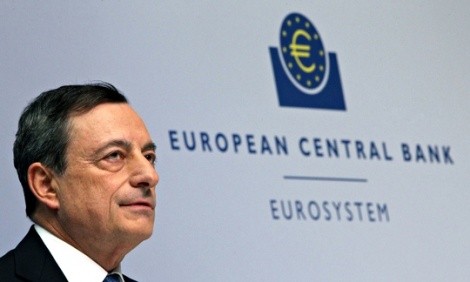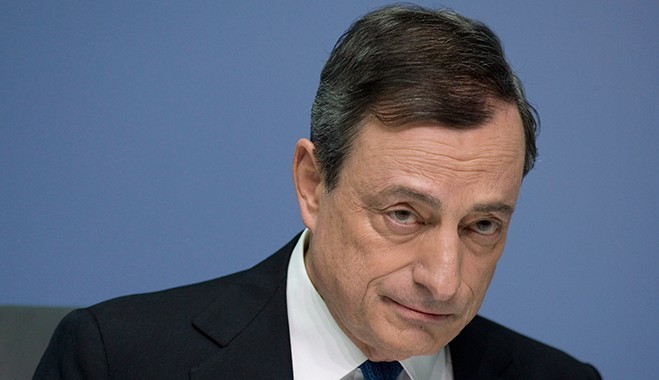Quantitative easing in Japan Europe A confidence trick
Post on: 16 Март, 2015 No Comment

Asset allocation tips from a global investment strategist
Posted on November 18, 2014 in Global Investing
2C62 /%Quantitative Easing (QE) in Japan and Europe should spark a rethink on asset allocation. However, as investment expert Tristan Hanson notes here, it isnt the only shift of relevance to global strategists. Lower oil prices and a stronger dollar are among the many factors playing a role in markets. He delivers in-depth analysis of global economic trends and feeds this into his investment decision-making. JC
By Tristan Hanson*
The unexpected announcement on 31st October by the Bank of Japan (BoJ) to increase its QE program could not have been timed better, coming less than 48 hours after the Federal Reserve concluded their QE program.
2C150 /%
Tristan Hanson looks at quantitative easing in Japan and Europe and implications for asset allocation.
A week later, ECB President Mario Draghi confirmed that the ECB Governing Council is “unanimous in its commitment to using additional unconventional instruments within its mandate” and formalised an “expectation” that the ECB will increase its balance sheet by €1trn towards early 2012 levels. Given stories circulating prior to the meeting of a bitterly divided ECB, the message was a positive surprise. Thus, the baton of balance sheet expansion has been well and truly passed from the US to Japan and the euro area.
The BoJ’s QE programme was already large but has been expanded by around 25% with no fixed end-date. The BoJ will now purchase Japanese government bonds (JGBs) at an annual pace of Y80trn or around US$700bn, equivalent to 15% of annual GDP. This rate of monetary expansion in dollar terms is about 70% of the pace of asset purchases made by the Federal Reserve during its most rapid phase of QE3 (in late 2012/2013) for an economy which is less than a third of the size of the US.
Concurrently, the Government Pension and Investment Fund, Japan (GPIF) with assets of over US$1.1trn announced a shift in asset allocation from domestic bonds (target weight reduced from 60% to 35%) to domestic equities (target increased from 12% to 25%) and foreign bonds and equities (combined target from 23% to 40%). The news reinforced the reflationary impetus of the BoJ’s announcement, lifting Japanese equities by over 4% on the day and sending the yen sharply lower.
This recent news indicates that despite the Federal Reserve concluding its asset purchases and inching towards an interest rate hike, G3 central bank liquidity provision will remain significant if the BoJ and ECB deliver.
The BoJ’s commitment is credible; despite the measures already announced (liquidity provisions to banks and purchases of private securitised assets), question marks remain over whether the ECB can achieve the expected balance sheet expansion. Most likely, to create a further €1trn of bank reserves, the ECB will have to include purchases of other assets, possibly corporate and supranational bonds, but most likely purchases of government bonds too. This faces resistance from the Bundesbank, but it appears Draghi has sufficient support within the ECB to act.
As a rough rule of thumb, if the ECB can achieve the expected balance sheet expansion over two years this would equate to a monthly rate of liquidity injection of US$33bn. This would be roughly the same pace that the Federal Reserve’s balance sheet has been expanding on average over the past six months. Clearly, achieving this requires a significant step up in asset purchases.
Currency implications
Monetary policy is therefore diverging between the US, where stimulus is being withdrawn, and Japan/Europe where it is increasing, reflecting divergent economic conditions. This explains the appreciation of the US dollar against the euro and the yen this year and we expect this trend to continue.
The most recent US employment report indicated healthy job gains and another decline in the unemployment rate (to 5.8%) and we expect the US to deliver solid, above-trend growth over the coming 6-12 months. The recent decline in the oil price is likely to provide further stimulus. With the labour market continuing to tighten, at some point next year the Federal Reserve is likely to raise interest rates. At the moment, we expect this to occur around June but the decision will be based on economic developments in the meantime, including the various impacts on growth and inflation from lower oil prices and a stronger dollar.
While UK growth appears solid, the euro’s decline is likely to weigh on sterling. Moreover, political risk remains a concern as the general election nears, with another hung parliament very possible. Either way, should the Conservatives emerge as the lead party, the risk of EU-exit would increase; while a Labour victory (or Labour-led coalition) would be viewed as negative for business. We expect sterling to outperform the euro given its superior economic growth, but we retain a preference for the US dollar.
Tectonic shifts
The significant divergence in monetary policy between major economic blocs is not the only important shift taking place. Brent crude oil is down more than 30% from its peak. The combination of a stronger US dollar and weaker commodity prices is putting pressure on a number of emerging markets, not least Russia, which is also feeling the consequences of European and US sanctions.
The ruble has declined more than 25% against the US dollar since June. But various other EM producers are under strain: speculation that Venezuela will default has grown; Nigeria is battling to maintain its currency peg; while Brazil remains stuck in a low growth rut with downward pressure on the currency and asset prices.
Of course, a relative price shift creates winners as well as losers. Most of the industrialised world and much of EM Asia (in particular, the likes of India) are beneficiaries of oil price weakness.
Uncertain world
No investors around today have experienced an environment similar to the one we are currently in. Animal spirits went into reverse in 2008 in the context of extremely high aggregate debt levels. Central banks have expanded their balance sheets considerably to fight deflationary forces. The result has been mediocre growth but elevated asset prices.
Quantitative Easing is in part a confidence trick. Fears have grown that it is unable to deliver the economic growth required to justify the elevated asset prices it has promoted. But to avoid a deflationary outcome, it is essential that asset prices are sustained at high levels (absent much stronger growth in demand).
Were confidence to evaporate and asset prices fall again, it is unclear what more governments or central banks would do. More radical, but very likely much more effective, policies are being proposed such as “helicopter drops” of newly printed money direct to households (see here and here). Such policies would likely be effective in boosting demand, but it is uncertain how bad things would have to become before they are introduced.
This context – high debt levels, high asset prices, tepid economic growth – creates a very uncertain environment for investors, exacerbated by the tectonic shifts underway in currency and commodity markets highlighted above. Unacceptable economic outcomes, such as in Europe, are also bringing to the fore dramatic political shifts.

Left-wing parties such as Syriza in Greece and Podemos in Spain did not exist a few years ago and yet both have become serious contenders and it is possible that Greece, as well as Spain, may face an election next year. Meanwhile in France, the Front National recently won its first ever seat in the Senate and its leader, Marine Le Pen, topped a presidential poll for the first time in September.
The considerable uncertainty created by this environment means no-one can be certain how things will develop over the coming years. We all have to be alert to various scenarios that could transpire and adjust accordingly. As Keynes famously said, “When the facts change, I change my mind. What do you do, sir?” Flexibility and an open mind are essential.
Positioning
Investment strategy across our Multi Asset Funds has not changed dramatically over the past month. We have favoured the US dollar for some time and its recent appreciation has contributed positively to our sterling and euro-denominated funds.
Similarly, we continue to prefer equities of the major asset classes. Equity valuations globally are not at bargain levels, but nor are they prohibitively expensive, in our view, on 14.5x forecast earnings. US valuations look more stretched, especially on cyclically-adjusted measures that account for high profit margins, but in part this reflects relative economic strength.
Moreover, while US profit margins are likely to decline over the medium-term, we see little evidence that wage pressures or commodity prices will crimp US margins any time soon, although currency strength will pose a headwind to multinationals. Most likely, it would require an economic downturn for US margins to contract significantly. This is not our base case scenario and we believe risks to the US economy are more likely to come from overseas than from within.
While US monetary policy is likely to become less accommodative, this will only occur if the economy can generate reasonable nominal growth. Meanwhile, as we have seen, monetary policy is becoming more accommodative in other parts of the world. With inflation low and growth momentum weak in China, it is likely that further easing occurs there too. Overall then, global monetary policy remains supportive.
The risk to equity performance is therefore likely to come from disappointing growth or a shock that increases the required risk premium. This is a scenario we cannot rule out and we see greatest economic risk coming from Europe and China. Our current core view is that both regions will muddle along without facing a major catastrophe. If so, global growth should accelerate modestly next year and we believe this will be sufficient for equities to outperform fixed income. Equity outperformance is by no means guaranteed, but it remains our base case.
The only significant change in our bond positioning has been to add to US high yield bonds on recent weakness. We expect US default rates to remain low given reasonable economic growth and low interest rates and therefore believe the recent spread widening presents an opportunity. We are underweight developed market government bonds, but maintain some exposure to Mexican and Indian government bonds along with the currency exposure.
As we highlight, much can change and we remain alert to risks that may require us to change strategy. However, as things stand, current positioning reflects our best effort at navigating these choppy waters as we steer a course in pursuit of delivering attractive risk-adjusted returns for our clients.
The below table summarises our views on the major asset classes:
2C425 /%
* Tristan Hanson is head of asset allocation at Ashburton Investments. @AshburtonInvest














